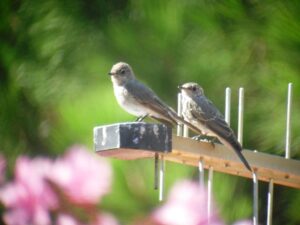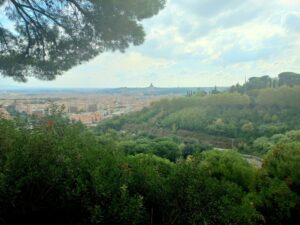Birding Rome
Millions of tourists visit Rome each year, and among them are many birders who are unaware of the opportunities the city offers for finding some of Europe’s most appealing birds. The Eternal City combines a uniquely rich historical and artistic heritage with an underappreciated natural abundance. Even amid the urban bustle, parks, gardens, and nature reserves abound, many of them incorporating important historic sites. Thanks to Rome’s amazing backdrop of ancient ruins and monuments, it is easy to sightsee and watch birds all at the same time. In Rome, you don’t just see birds: you see them sitting on the Milvian Bridge, constructed in 206 BC, or on the Aurelian Walls, erected in AD 275.
incorporating important historic sites. Thanks to Rome’s amazing backdrop of ancient ruins and monuments, it is easy to sightsee and watch birds all at the same time. In Rome, you don’t just see birds: you see them sitting on the Milvian Bridge, constructed in 206 BC, or on the Aurelian Walls, erected in AD 275.
Villa Borghese is one of the largest urban parks in Europe; like its counterpart in New York, this area is home to a fine variety of breeding birds and attracts a surprising range of migrants. While you are taking an easy walk in the park, such colorful species as the great tit, European robin, and common chaffinch are likely to appear. Eurasian green woodpeckers, European serins, and Sardinian warblers are among the resident species, as are both the Eurasian tree sparrow and the Italian sparrow.
The nearly 500 acres of gardens, woods, grassland, and lakes at Villa Doria Pamphili are a magnet to migrant and nesting birds. Among the attractions are European turtle-doves, common firecrests, and European serins.
Almost anywhere in the city, rivers, meadows, and shrubs offer chances at many other Mediterranean birds, including woodchat shrikes, common nightingales, corn buntings, bee-eaters, hoopoes, pallid swifts, penduline tits and subalpine, Sardinian, and great reed warblers. On warm days in spring and fall, many migrating raptors pass over Rome, including European honey-buzzards, western marsh-harriers, and black kites.
Visits to these sites must be conducted by a licensed tourist guide, but of course I am allowed to share our natural history observations as we go along.
“My wife and I went birding in Rome with Marco. We had a great trip and saw many new bird species to add to our life lists. Not only was the birding great but Marco is very knowledgeable of local architecture, history and cuisine. Top marks to Marco for his guiding and hospitality” – Happy Customer from TripAdvisor
